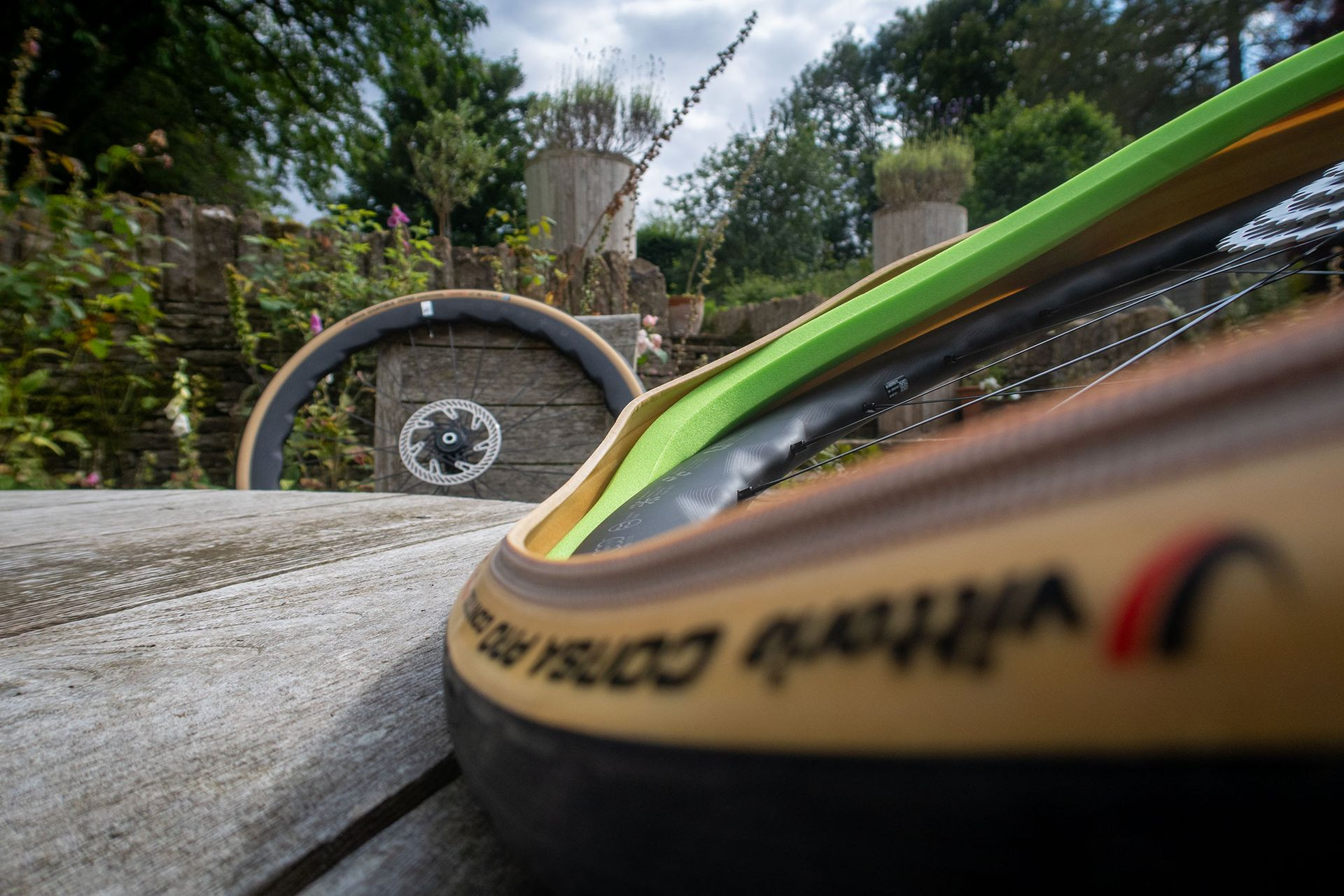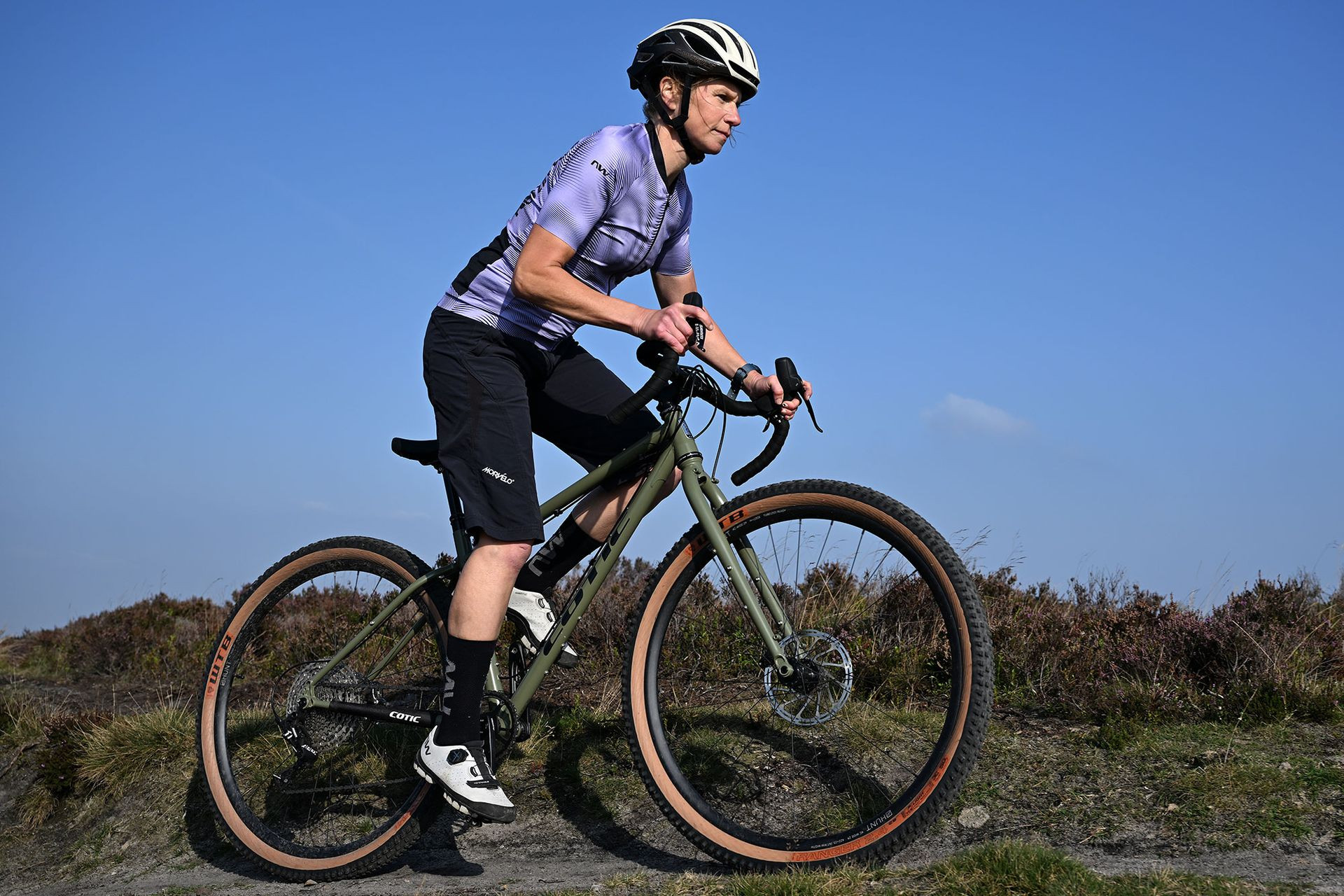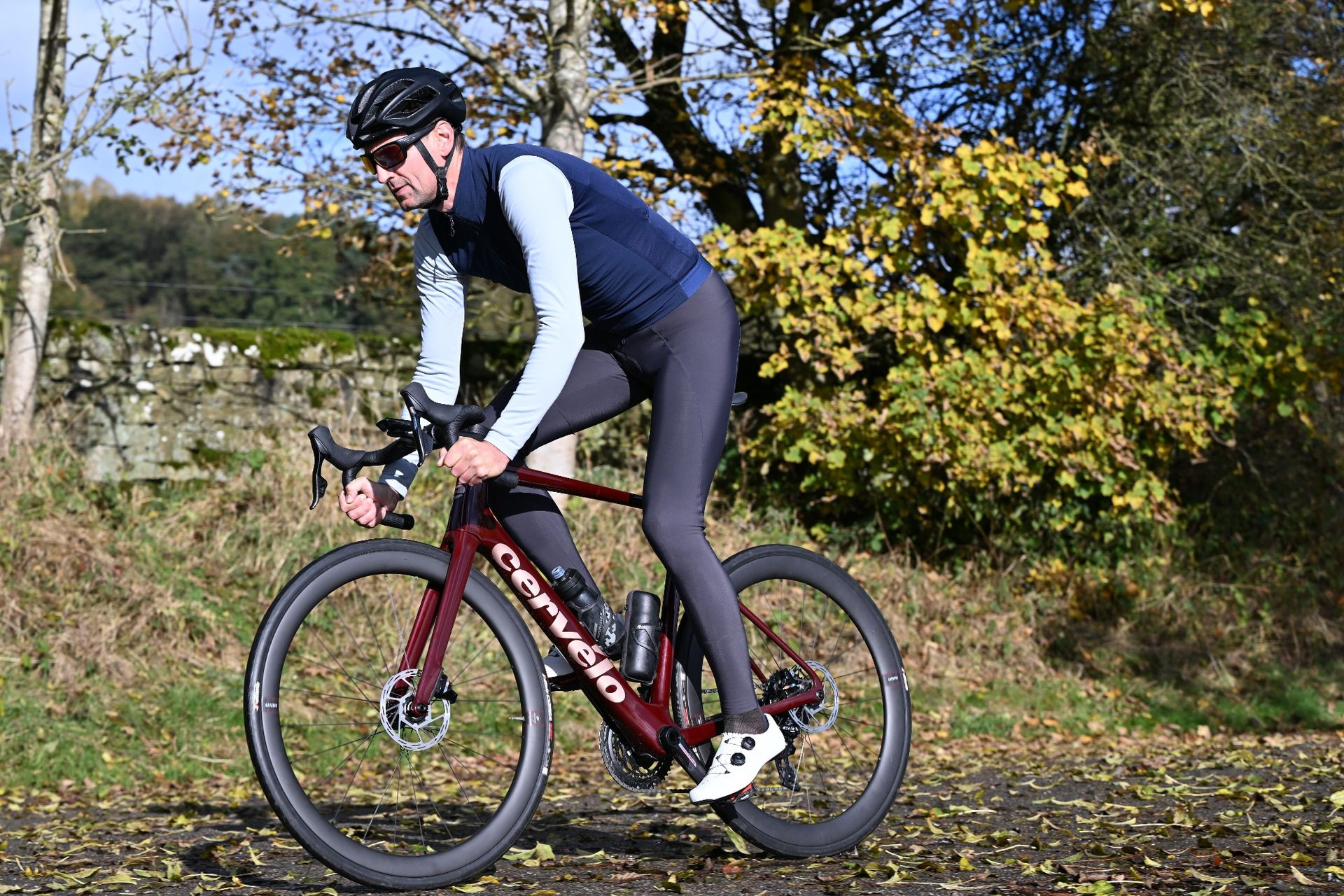Gravel bikes. They’re everywhere, aren’t they? Marketed as the rugged, go-anywhere machine, the one bike to conquer all terrains and answer all your cycling desires. Like that endlessly enthusiastic puppy, gravel bikes have charmed their way into the hearts of cyclists everywhere. They promise comfort, capability, and a cool aesthetic that screams adventure. Images of tackling rough trails, escaping into nature, and responding to the call of the wild are all part of the gravel bike dream.
And the accessories! Gravel bikes practically beg for chunky tires, sturdy racks, those rugged-looking bags that road cyclists might scoff at, and all sorts of add-ons. Olive green, dung brown, straw yellow – the colors of the gravel cycling cognoscenti. Accessorize with Voile straps, and you’re instantly ready to look the part.
 Wilier Jena from the side on a light gravel track
Wilier Jena from the side on a light gravel track
Wilier Jena gravel bike on a gravel path, illustrating the author’s experience of owning a gravel bike that is not frequently used on gravel.
But here’s a confession: I often find myself avoiding gravel on my gravel bike. Purchased on a whim (yes, it was an end-of-season sale!), it’s an acquisition that has occasionally sparked regret. Let me be clear, the bike itself is fantastic. My Wilier Jena, equipped with the superb Campagnolo Ekar 13-speed groupset, is a truly capable gravel machine. Yet, through no fault of its own, its intended purpose has become somewhat… diluted in my riding.
I have a sneaking suspicion I’m not alone in this. Have many of us been swept up in the “one bike to rule them all” wave and bought a gravel bike, only to find it’s not quite the perfect fit for our everyday cycling? The gravel bike’s popularity is undeniable.
The Gravel Bike Boom: Are We All Riding Gravel?
The Bicycle Association in the UK, tracking bike sales across retail channels, reports impressive figures. In the year leading up to July 2024, around 30,000 gravel bikes were sold in the UK alone. That’s a 15% increase from the previous year, and a staggering 284% jump compared to pre-pandemic sales. The numbers speak volumes about the gravel bike craze.
But I can’t help but wonder: how many of these bikes are actually seeing proper gravel? I’m talking about the kind of gravel you find in places like the American Midwest – not the often muddy and less-than-inspiring bridleways that pass for gravel in many parts of the UK.
 Vittoria Air-Liner pictured in Vittoria Corsa Pro Control tyre
Vittoria Air-Liner pictured in Vittoria Corsa Pro Control tyre
Vittoria Corsa Pro Control tires and Air-Liners on a gravel bike, showing modifications for better on-road performance, transforming the gravel bike into a versatile endurance road bike.
The saving grace of my gravel bike, and perhaps many others, is its versatility. With a few tweaks, my Wilier Jena has morphed into a surprisingly good endurance road bike for those rougher road surfaces. Like me, many gravel bike owners I know have gradually shifted away from questionable gravel towards the allure of faster country lanes and quieter byways. The transformation often involves swapping out those knobbly gravel tires for something slicker and faster, like 32mm Specialized Roubaix Pros or Vittoria Corsa Pro Controls. Others adapt their gravel machines for winter riding, fitting robust road tires and practical mudguards.
However, the world of gravel is evolving. Gravel racing is booming, fueled by iconic events like Unbound in Kansas and SBT GRVL in Colorado. The number of participants in these races is exploding. SBT GRVL in 2024 saw over 3,000 riders, while Unbound attracted a massive 5,000, nearly double the 2021 numbers.
The cycling industry giants have noticed. Gravel product launches are now heavily influenced by these major US races, focusing on increased off-road speed and the pursuit of race wins.
 Cotic Cascade on moorland ride
Cotic Cascade on moorland ride
Cotic Cascade gravel bike on a moorland trail, illustrating the trend of gravel bikes becoming more focused on off-road capabilities, potentially compromising on-road performance.
This racing influence is shaping gravel bike design. Frame geometries are becoming slacker, suspension is appearing both front and rear, and tire clearances are growing wider, matched by wider internal rim widths. Gear ranges are expanding to rival mountain bikes.
This increasing off-road focus of gravel bikes isn’t inherently negative. After all, they are called gravel bikes. But as they become more specialized for challenging off-road terrain, their on-road performance inevitably takes a hit.
Part of the initial appeal of gravel bikes, particularly in regions like the UK, was their ability to seamlessly blend stretches of decent gravel with fast tarmac sections. Many typical “gravel” rides often involve significantly more road than actual gravel, even in rural areas. Riding purely on the road with 50mm+ tires isn’t exactly ideal.
 An allroad bike like the Caledonia is an adaptable machine
An allroad bike like the Caledonia is an adaptable machine
Cervelo Caledonia-5 all-road bike, highlighting its versatility and suitability for both tarmac and light gravel, presenting it as a potentially better alternative to a dedicated gravel bike for some riders.
In essence, modern gravel bikes are arguably becoming less versatile than their predecessors from just a few years ago. So, potential buyers beware. If you anticipate spending a significant portion of your riding time on tarmac, and the rest on relatively mild trails, think carefully before jumping on the bandwagon of a dedicated, hardcore gravel munching machine.
The All-Road Solution: A New Breed of Versatile Bikes
Fortunately, the ever-innovative bike industry has an answer: the all-road bike. Perhaps this is what I should have purchased back in 2022. While the term “all-road” isn’t entirely new, these bikes have truly come into their own in recent years.
Imagine an endurance road bike, but with a slightly reinforced frame and clearance for 38mm tires. A bike designed to be fast, comfortable, and capable on both smooth roads and light gravel. Cycling Weekly has recently tested a range of these all-road bikes, including the BMC Roadmachine, Ribble Allroad, Cervelo Caledonia-5, and Pashley Roadfinder, among others. Rumor has it that even more major brands are set to launch new all-road ranges soon.
So, perhaps my gravel bike purchase wasn’t the perfect choice for me. Maybe an all-road bike would have been a better fit. The silver lining is that as gravel bikes become more specialized and endurance bikes become more versatile, cyclists ultimately benefit from greater choice. And more choice is always a good thing when it comes to finding the best bike for your individual riding needs.
